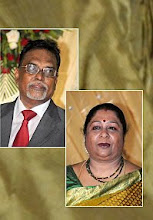A masterpiece turns 50
V. GANGADHAR
It took 15 years to make K.Asif's magnum opus at a staggering cost of Rs. 1.5 crores. Time has proved ‘Mughal-e-Azam's' enduring appeal.

Immortal: Dilip Kumar and Madhubala in Mughal-e-Azam.
On August 6, 1960, the people of Bombay were surprised at the decorated elephants trundling along the road. They were going from Mahalaxmi film studio to the near-by new and swanky Maratha Mandir theatre, carrying aluminium boxes containing reels of the film ‘Mughal-e-Azam.' At the theatre, the reels were received ceremoniously by the maker of the film, K. Asif and his production unit. The city's elite was present at the grand premiere and it was the lead news in the next day's papers. This year, Asif's masterpiece, ‘Mughal-e-Azam,' turns 50.
Legend of Anarkali
The Hindi film industry had made several films with historical themes of which, the legend of Anarkali (who loved Prince Salim, and lost), was an important one. In the early 1950s, Filmistan had released its super hit ‘Anarkali' starring Bina Rai and Pradeep Kumar with an immortal music score set by C. Ramachandra. An Agra film fan claimed to have watched it on 75 consecutive nights.
Filmistan was a production house that churned out hundreds of successful films. But ‘Mughal-e-Azam' that retold the tale of Anarkali, was more than a film -- it was a dream that came true after 15 years. Asif never thought small -- people called him the ‘Cecil B. DeMille' of India for his ‘grand' approach to filmmaking. He wanted to make a movie, which would dazzle the audiences. The fictional romance that played out at the Mughal emperor's court had all the ingredients of a grand epic -- eye-catching and perfect. As for the cost, Asif didn't care.
It was 15 years in the making and at a staggering cost of Rs.1.5 crores. Production was stalled in between because the producers kept wondering how so much money could be spent so fast! Asif had designed a ‘Sheesh Mahal' which cost Rs.15 lakhs and he insisted on using only genuine precious stones and pearls. His all-consuming passion convinced a group of Bombay businessmen and affluent film lovers and soon shooting resumed. Asif had gone for the best: his lead pair, Dilip Kumar and Madhubala, was the hottest romantic duo in the film industry and were real life lovers. Prithviraj Kapoor, who played Akbar, was another huge name and the best people from the film industry were hired to handle choreography, photography, location shooting, costumes and other details.
Asif would have loved to shoot the entire film in colour, but the cost was prohibitive. After consulting both Indian and foreign experts, Asif shot the Sheesh Mahal scene in black and white and colour. The former version was not impressive and so the colour version was sent to London for processing. When it came back a month later, it was viewed by the production unit, the financiers and the distributors. It was a stunning scene thatoverwhelmed everyone and they knew they had a winner.
The dialogue and the lyrics naturally had an Urdu slant. Only Naushad saab could do justice to the music score. For writing the lyrics, poet Shakeel Badayumi was the natural choice. Naushad composed nearly 25 tunes but half of them had to be left out. The music score had to be handled carefully, to suit the mood of the film. Take the song, ‘Mohe Panghat Pe Nandlal Chhed Gayo Re' celebrating Janmashtami, the birthday of Lord Krishna. The objection to such a song in a film which was shot in a Mughal royal court was overruled when it was pointed out that Akbar was secular at heart and had married a Hindu woman, Jodhabai.
Dilip Kumar and Madhubala made a wonderful romantic pair and their love scenes (without physical contact) are memorable. In one scene, Prince Saleem caresses Anarkali's cheek with a feather on a moon-lit night. The famous classical number, ‘Prem Jogan Ban Jaoon' in Sohni raga plays in the background. There is no dialogue. Just their eyes reveal the passion. Only an ustad could have done justice to the sequence. Bade Ghulam Ali Khan was engaged to sing this song at a fabulous fee of Rs.50,000. He watched the rushes of the love scenes between the lead pair, was highly impressed and rendered a perfect number. Naushad saab had another ace to play -- the saucy, provocative number, ‘Pyar Kiya To Darna Kya.' With time running out, he was not happy with Shakeel's lyrics and rejected two versions. Suddenly, Naushad saab recollected an eastern UP folk song, ‘Pyar Kiya Kya Chori Kari Hain,' and Shakeel lost no time in converting the new lyrics into a ghazal. The recording went on for an entire night and what emerged was a super hit melody which remains eternally popular because it echoes the sentiments of every girl in love.
Lata Mangheshkar, who sang most of the numbers, came out with flying colours. During the early days of her career, Dilip Kumar had expressed some reservations about her lack of command over the Urdu language and she hired teachers to rectify the errors and improve her Urdu pronunciation. ‘Mughal-e-Azam' was the ultimate test, and she came out triumphant. Dilip Kumar remembers that shooting for the film was quite challenging and difficult. Although, the lead pair displayed tremendous passion on screen, in real life their love affair had gone sour mainly because of the attitude of Madhubala's father. She had also developed a heart problem yet patiently enacted scenes where she was chained and since the chain was heavy, she could only move with difficulty. ‘Mughal-e-Azam' was dedicated to beauty and romance, and Madhubala did not let Asif down.
Anarkali may be a myth,but ‘Mughal-e-Azam' gave her life and the audience fell in love with her.
(The Hindu, friday Review, Chennai, 27:08:2010)
______________________________
Labels: Cinema/ Hindi, nostalgia


0 Comments:
Post a Comment
<< Home